Beginners Guide To Pitching
Golf Monthly Top 50 Coach Dan Grieve discusses the basic fundamentals of pitching
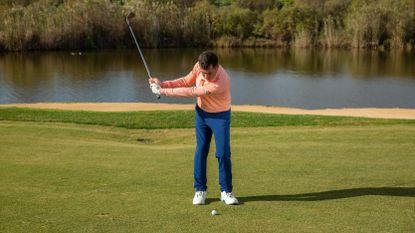


If you're new to the game, one of the hardest things to do is develop a feel for the finesse shots - things like pitching and chipping. In the video and article below, Golf Monthly Top 50 Coach Dan Grieve shares his expert advice to help beginners strike the ball better and save shots approaching the green.
Pitching can prove awkward, especially for those just starting out. Hitting your number consistently from 30-70 yards is not easy, but there are a few keys to better pitching that will help everyone.
The set-up
As with most things in golf, the set-up is vital. A lot of people talk about taking the club back to certain points on the clockface but I've yet to meet anyone who can do that consistently. Instead, it's better to use your set-up to alter the distance you want to hit the ball. This is what I call my address system.
Address 1 - 30 yards
Using my 56-degree wedge, you want your stance to be about the width of a clubhead for this 30-yard shot, with the ball position just slightly back of centre. Once you've done that, grip down the club so your hands are about an inch from the bottom of the grip and put around 60% of the weight on your front side. Keep that pressure there throughout the swing.

Narrow your stance so it's the width of a clubhead and grip down for a 30-yard shot
You'll notice this will limit how far back the club can go when you start your swing, as shown above. This means you can make what feels like a full swing and hit it 30 yards, which will increase your consistency and ensure you're always accelerating through the shot.
Address 2 - 50 yards
Get the Golf Monthly Newsletter
Subscribe to the Golf Monthly newsletter to stay up to date with all the latest tour news, equipment news, reviews, head-to-heads and buyer’s guides from our team of experienced experts.
To hit roughly a 50-yard pitch with the same club, set up so your stance is the width of two clubheads. Put your hands in the middle of the grip this time and move a little bit further away from the ball to account for these changes.
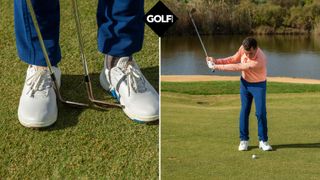
To hit a 50-yard shot, increase the width of your stance slightly and come further up the grip
Still keep your pressure left throughout the shot and swing back and you should notice the club travels further this time, which will increase the distance you hit this pitch shot.
Address 3 - 70 yards
The stance with this shot should be the width of three clubheads and you should be near the top of the grip. Again, move a little further away from the ball but keep your weight left throughout the shot.
When you take a backswing, you should now be a little further back. Swinging through should help you hone a reliable 70-yard shot.

This is how to get into the address three position
Rather than leaving it all to chance, this address system will help you get started on the right foot when it comes to pitching, which will increase your enjoyment of the game.

Location: Woburn GC
Dan is one of the leading coaches in the UK, a Fellow of the PGA and a short-game virtuoso. He has had considerable success with a collection of tour pros, helping them to Order of Merit titles and major victories, and his Short Game School is the most attended in the UK. His students, past and present, include Charley Hull, Georgia Hall, Inci Mehmet and Iona Stephen.
Most common problem:
Swing – over the top , help by getting the basics correct at address and making them aware how to get the club online coming down.
Short game – creating spin and feel around the greens, help by educating on what the short game actually is (weak on purpose) and understand bounce and how they can apply it to different lies/situations.
Greatest success story:
Helping Georgia Hall from World No. 450 to No. 6 and winning a Major, two Order of Merits and Solheim Cup appearances.
Greatest teacher:
Alex Hay was a great influence during my first few years at Woburn. In sport more generally Sir Clive Woodward has taught me how to deliver at the highest level.
Most common fault:
Flipped right hand (hands behind the ball). Understand a correct coil/load going back and how to sequence better coming down so the chest opens up and gives the arms space to deliver a stronger impact. Lots of body action drills to enhance the feel, with and without the ball.
-
 The CJ Cup Byron Nelson Leaderboard And Live Updates - Ben Kohles Takes Lead After Fourth Birdie
The CJ Cup Byron Nelson Leaderboard And Live Updates - Ben Kohles Takes Lead After Fourth BirdieThe Canadian leads going into Sunday, as an interesting final day is in store at TPC Craig Ranch
By James Nursey Last updated
-
 Major Winner Receives Fourth Invitation To PGA Tour Signature Events
Major Winner Receives Fourth Invitation To PGA Tour Signature EventsWebb Simpson is set for another Signature Event appearance, despite the American currently sat 143rd in the FedEx Cup standings
By Matt Cradock Published
-
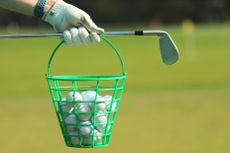 Golfing New Year’s Resolutions... How To Commit Both On And Off The Course!
Golfing New Year’s Resolutions... How To Commit Both On And Off The Course!Golfing New Year's resolutions advice from our mental game coach Gareth Shaw
By Gareth Shaw Published
-
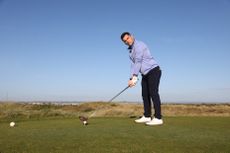 Confidence In Golf: Why Does It Go And How Can You Rediscover It?
Confidence In Golf: Why Does It Go And How Can You Rediscover It?Confidence tips for golf from mental skills coach, Gareth Shaw
By Gareth Shaw Published
-
 How To Stop Hooking The Golf Ball
How To Stop Hooking The Golf BallWant to know how to stop hooking the golf ball? In this video and article, Golf Monthly Top 50 Coach Trey Niven shares two simple steps to get you back on track
By Trey Niven Last updated
-
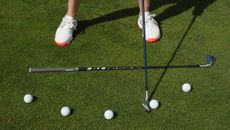 Why Do I Pull Iron Shots? Causes And Cures
Why Do I Pull Iron Shots? Causes And CuresIn this article and video, Katie Dawkins looks at why golfers pull iron shots and offers some helpful tips
By Katie Dawkins Published
-
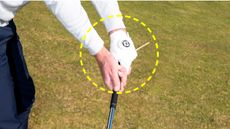 Inside Takeaway Golf Fix
Inside Takeaway Golf FixStart your swing the right way with these inside takeaway golf tips from Golf Monthly Top 50 Coach Andrew Jones
By Andrew Jones Last updated
-
 Best Golf Exercises: 10 Moves For Every Golfer To Try
Best Golf Exercises: 10 Moves For Every Golfer To TryBelow, we look at the best golf exercises as demonstrated by golf strength and conditioning coach Jamie Greaves
By Jamie Greaves Last updated
-
 Golf Strength Training: Upper And Lower Body Exercises
Golf Strength Training: Upper And Lower Body ExercisesIn these golf strength training videos, fitness guru Jamie Greaves demonstrates some fantastic exercises to help boost muscle mass, strength and power
By Jamie Greaves Last updated
-
 How To Cure The Putting Yips
How To Cure The Putting YipsLearn how to cure the putting yips with these simple and practical pointers from PGA Professional Gareth Shaw
By Gareth Shaw Last updated